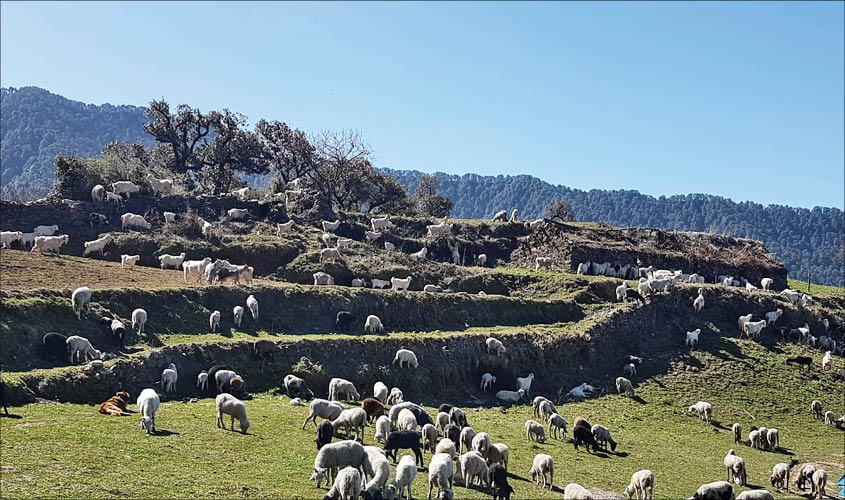Nestled in the lap of the Garhwal Himalayas, Nag Tibba—which literally translates to “snake hill”—is the highest peak (9,915ft) in this range. This serene setting is believed to be the home of the Nag Devta or the God of Snakes, from whom it borrows its name.
It is also a well-known trekking trail. If trekking is an important part of your life, just like it is of mine, then Nag Tibba should already be on your bucket list. The best thing about this place is that it is among the few trekking sites in the country untouched by rampant commercialisation. Nag Tibba isn’t like Chhalal, Tosh, Malana, Jalori and Triund.
When I booked my trip to Nag Tibba through a firm named Aquilla Hikes, I was connected with a group going in the same direction.We started on 29 March, Friday from New Delhi with this group of 16 people. We drove down to Pantwari, a small village in Uttarakhand, which is also the point beyond which vehicles can’t be taken.
It took us almost 8-9 hours to reach Pantwari from Delhi. In Pantwari, after a small breakfast, we began walking towards our base camp—around 5.5 kilometers away from the breakfast point. It took us almost four hours through a wild, mountainous path to finally reach the base camp.
We were accompanied by two guides, Akaash, a Delhi resident; and Rahul, a Pantwari local. They instructed us to carry large water bottles due to the water scarcity in the area. “The water available on the way is mostly acidic in nature and there are very few water resources in this part of the valley. Also, the water problem in villages is quite severe. Villagers have to carry water on mules from places 8-10km away from their homes”, Rahul told us.
As we started our adventure, I asked Akaash about the best months to visit this place. He said “This is the best time. The months April and May are the best to visit this peak as the temperature is soothing and, of course, the view is captivating”.
We reached the base camp tired and famished, at around 3 p.m. But the scenery was enough of an antidote to our exertion. The site was the very epitome of tranquility and beauty. Every sunset and sunrise I witnessed there has been imprinted on my memory.

Thanks to the surroundings, the place of accommodation at our base camp was better than even a 7-star hotel. Here, the simplest of food items tasted heavenly. We were served some tea and snacks post-lunch, as we sat watching a brilliant, red-and-orange sunset. Some in the group stayed up till late, stargazing, which is a rare privilege for us city-dwellers.
The next morning began with a challenging four-hour trek towards the summit of Nag Tibba. I encountered some of the rarest species of flowers, trees and beautiful birds with colourful plumage on this 7 a.m. trek. Nag Tibba is known to be a paradise for birdwatchers and I understood why. Rare birds, like Himalayan woodpecker, Rufous-bellied woodpecker, pink-browed rosefinch were among the ones found in abundance on my way to the summit.
Halfway to the summit, we witnessed snow-covered paths lined with snow-blossoms. Seeing snow in April was certainly magical. We finally made it to the top and saw one of the most tranquil places ever. The view from the peak and its stillness spoke volumes. In that silence, we saw mountains all around us.
It was a moment to cherish and all of us captured it with our cameras. We then played some childish games with snow and headed back to the base camp. After a quick lunch; we halfheartedly prepared ourselves for the journey back home.
On the way back, around sunset I saw some villagers carrying light-blue-coloured flowers that are found at the top of the mountain. One of them said to me, “Our Nag Devta and Lord Shiva are fond of these flowers and this is our daily offering to them. We offer these ‘Dhatura’ flowers every day, and these plants are only found on top of these mountains. So we climb up every day for these flowers and he blesses us with prosperity and good health.”
The simplicity and strength of their belief made me think about the complex lives we live in our fast-paced cities.

